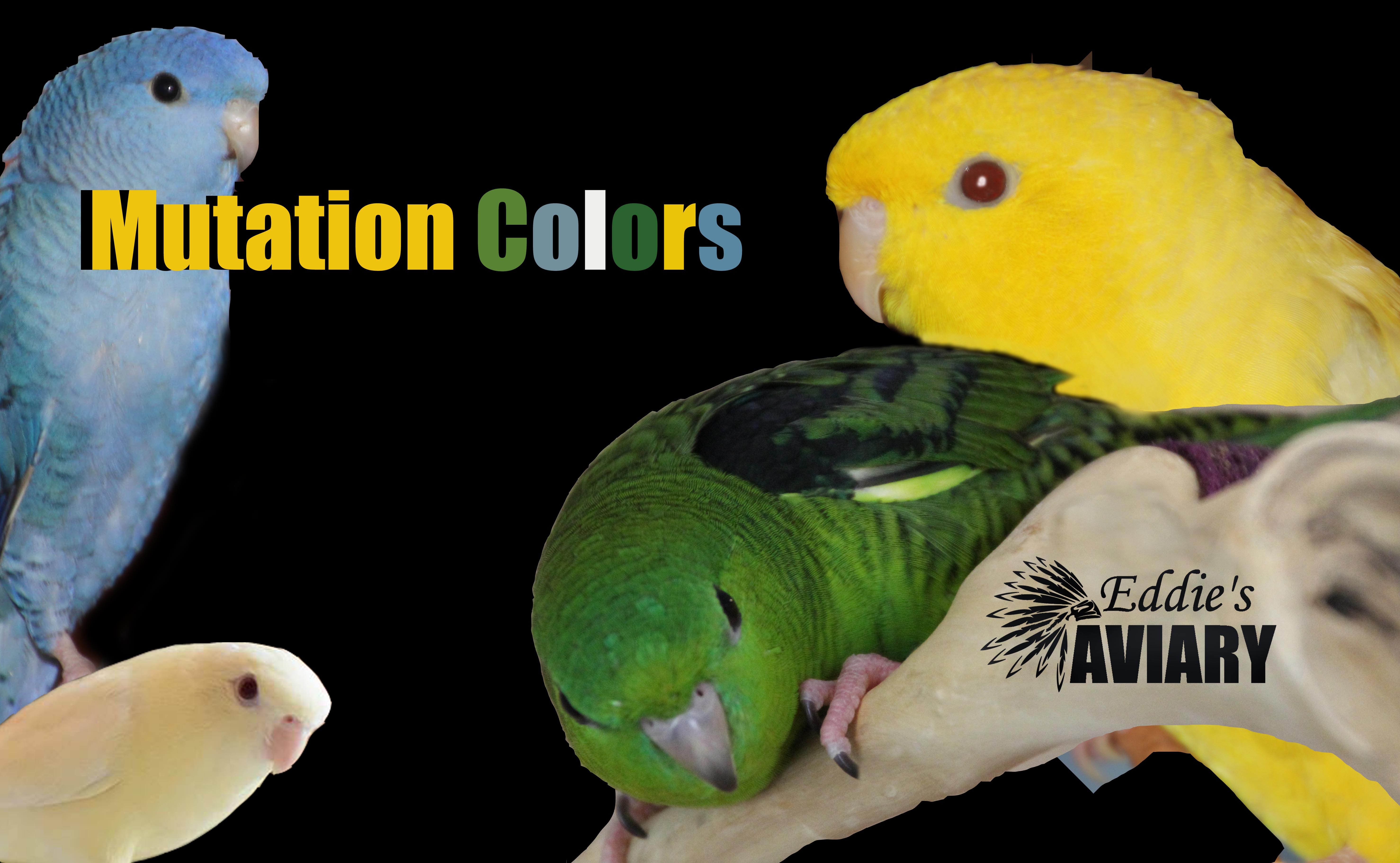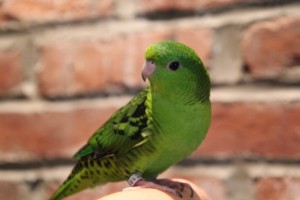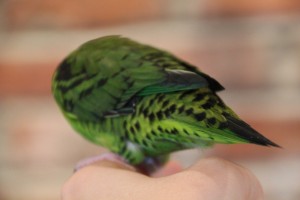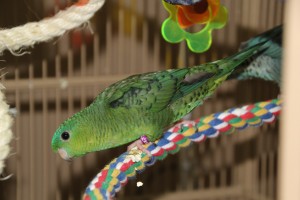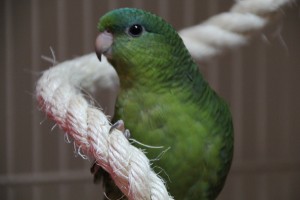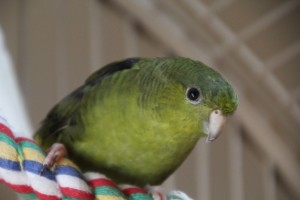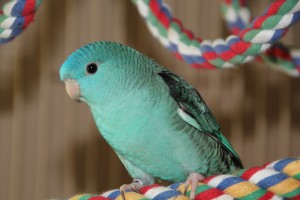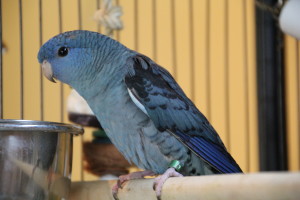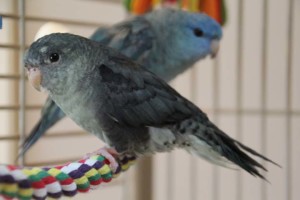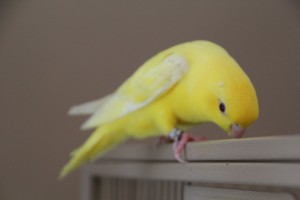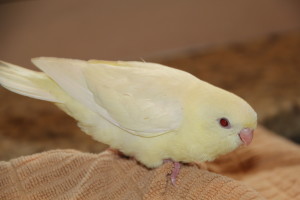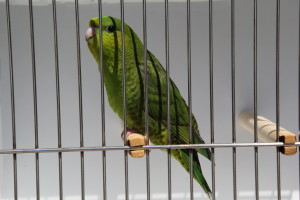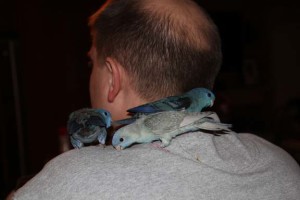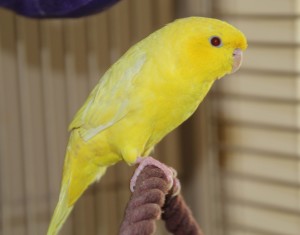Our babies are a labor of love. You may find prices of other Linnie’s for sale to be both higher and (most often) slightly lower. Our birds are robust and high quality birds that are never inbred or kept in less than desirable conditions. As a result, our birds shine…. both in personality and physical quality. We feel our pricing is very fair. Click here for info on pricing for more information on what goes into making the cuddly baby you bring home. We haven’t had a price increase in our birds since 2015, and in 2018 we have gone up. The cost of feed and supplies has increased, as has the demand for our birds, and the species as a whole. They are very difficult to breed, as a result very few are able to offer any hand-fed babies for sale, and that impacts their cost. Message us if you are looking for a breeding adult bird, or a baby that is parent raised. They are priced much less.
It can be confusing with all the color mutations out there, so below I will identify most (I am missing some greywing mutations as we no longer raise any grewings due to poor genetics and potential resultant defects). I will post range pricing for each particular mutation. The higher price range would be for birds carrying a “split” gene, or are a rarer mutation. DNA testing is done by blood test and is an additional $30. Many colors can be genetically sexed by the parent pairing and DNA would not be needed.
Males that do not carry the greywing mutation will have stronger (darker and heavier) barring than females. This is normal. I will state the sex of the bird in the photographs below so that if you notice barring differences. The color differences can be slight within each color series, so look closely… here we go!
NORMAL OR WILD GREEN
Normal greens are the color of the Linnie in the wild. They positively glow! Their color is bright and is a surprise favorite among people who see them in person.
Normal Greens are $600 USD for a hand-fed baby which includes blood dna testing.
DARK GREEN (carries one dark factor)
Dark greens are closer to a forest green green than the Kelly green color of the normal green. When in condition, the brow will shimmer with a turquoise color.
Dark Greens are $600 USD for a hand-fed baby which includes blood dna testing.
OLIVE (carries two dark factors)
Olive green is an earthy color, similar to a moss green. They are the most rare of the green birds.
Olive Greens are $625 USD for a hand-fed baby which includes blood dna testing.
TURQUOISE
Turquoise is a light aqua color, and a very different blue than the cobalt. They are the color of tropical waters.
Turquoise are $625 USD for a hand-fed baby which includes blood dna testing.
COBALT (carries one dark factor)
Cobalt is a deep blue, in a different hue than the aqua. It is the richest of the blues.
Cobalts are $625 (sf violet cobalt – 675) which includes blood dna testing.
MAUVE (carries two dark factors)
Mauve is a slate grey color, sometimes almost a dull black color. They are very handsome birds, and the most rare of the blue series birds.
Mauves are $650 USD for a handfed baby which includes blood dna testing.
INOS – LUTINO & CREAMINO
Lutino is a yellow bird with clear nails (makes trimming a breeze!) and red eyes. Creaminos are buttery white birds (with clear nails) and red eyes. Greywing mutations of these colors will have a darker eye, and are hard to find in the United States.
Lutinos and Creaminos will come sexed as hens (as they are sex linked in our pairings, that is all we produce here) and are $625 for a lutino, $600 for a creamino USD for a hand-fed baby.
GREYWING MUTATIONS
We no longer raise any greywing mutations as we find them smaller and less vigorous, with poor feather structure. There is no pricing info here as we won’t have any.
The term “greywing” is often confused with what is called “dilute” in some other species. When this incomplete dominant trait appears onto one of the colors seen in the above list, it alters two things; the black barring on the body and wings, and the overall color hue of the bird. In both cases, they are lightened. Greywings come both in single factor (sf) and double factor (df). Only males can be visual single factor, as hens even when single factor in genes, appear double factor. Confusing, I know!
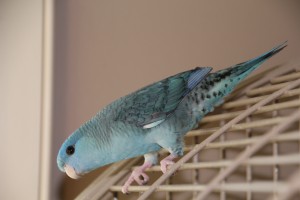
The greywing mutation makes the black barring on the body less evident. This is a single factor greywing cobalt male. Double factor greywings have even less barring.
© COPYRIGHT 2014 Eddie’s Aviary
Very Rarely (1 in 1,000 chance to start) the greywing mutation falls on a lutino or creamino bird. In those cases, color is actually added to the bird. Below is a photograph of our former greywing luting male. We worked with a European mentor to develop the greywing mutation line of Linnie in the United States. In 2017 we sold out of all our greywing ino produced along with foundation cock seen here to two caring and ethical breeders in the US that wanted to work with them. Contact me for their information if this is a mutation you seek.
We don’t carry a single Greywing bird in our aviary. We are an exhibition breeder and the greywing mutation reduced the size and quality of the markings in our birds enough that they weren’t competitive on the show bench, so we won’t offer them again.
